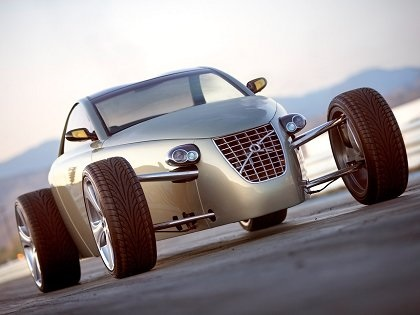1978 Dome Zero
- Story Cars

- Sep 26, 2022
- 2 min read
Design work on the Dome Zero began in 1976, and the prototype was completed in 1978. The creation of the car was motivated by Hayashi's desire to compete in the 24 Hours of Le Mans, a prospect that had full support from his employees, most of whom had professional backgrounds in auto racing. In addition to developing Zero into a race car, Hayashi intended to fund entry into the Le Mans competition by selling vehicles to the public.
The Dome Zero represented a technological leap forward for small-scale Japanese automakers. The unusual design of the Zero required an extensive engineering process, incorporating newly designed components and off-the-shelf items from other Japanese auto manufacturers. It had a strikingly modern wedge-shaped exterior reminiscent of the Lancia Stratos Zero, Lamborghini Countach, and Ferrari Berlinetta Boxer. It was rear mid-engine, rear-wheel-drive layout with a chassis of square-section steel tube. The 2.8L Nissan L28E SOHC straight-six engine produced 143 hp (107 kW; 145 PS). This engine was also used in the Datsun 280Z and 280ZX. With this engine and a curb weight of 920 kg (2,028 lb), the Dome Zero offered a power-to-weight ratio that matched contemporary Porsche models. The prototype also incorporated a ZF 5-speed transmission, independent double-wishbone suspension, and four-wheel disk brakes mounted in the rear.
The Dome Zero prototype was completed in time for the 48th Geneva Motor Show in 1978, where its striking design received a lot of attention from various investors and buyers. Despite this interest, the manufacturer could not achieve Japanese road certification for the prototype. This led to more energy being committed to a second prototype road car for the international market, the Zero P2. However, homologation rules were stringent in Japan, and Dome did not have the funds to sustain the lengthy and costly homologation procedure routine for well-funded mainstream Japanese automakers. It is not clear what the exact reasons were for Zero's failure to achieve Japanese homologation.
The Zero's appearance at the Geneva Motor Show resulted in Dome signing several deals with toy manufacturers to license the car's appearance. The funding from these deals enabled Dome to expand its headquarters and continue to develop road and racing cars.
Source: Wikipedia
Images: www.dome.co.jp


















































Comments